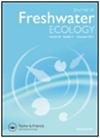Effects of high nitrogen concentration and low water level on the growth of the submerged macrophyte Vallisneria spinulosa
IF 1.3
4区 环境科学与生态学
Q3 ECOLOGY
引用次数: 0
Abstract
Abstract The problem of seasonal drought has intensified in recent years. Unfortunately, dry seasons can lead to poor water quality due to nitrogen (N) accumulation, which, in turn, may result in the gradual decline or even disappearance of submerged plants. This outdoor study was conducted to determine the morphological, biomass responses and C/N metabolism of Vallisneria spinulosa to the high N content and low water level. We used two N contents (i.e., low and high) and three simulated water levels (i.e., gradual water level increase from 60 cm to 150 cm over four periods (C), low water level of 60 cm maintained for three periods followed by an abrupt increase to 150 cm in the fourth period (CE) and low water levels of 60 ± 30 cm maintained for three periods followed by an abrupt increase to 150 cm in the fourth period (E)). For the low N content, low water levels for CE and E treatments caused increased ramet number and biomass of V. spinulosa. However, for the high N content, the low water levels did not cause such big changes in V. spinulosa. High N contents demonstrated a remarkably negative influence on the biomass of each organ (included leaf, stolon, root and tuber) of V. spinulosa and flowering ramet number. For C water level, the high N content caused an increase in free-amino acid (FAA) content in stolons and leaves, and no difference in soluble carbohydrate (SC) content. For E water level, there was no significant increase in FAA content of V. spinulosa under high N treatment; furthermore, there was no significant change in SC content under high N treatment except for leaves. In conclusion, low water levels exacerbated the damage to V. spinulosa caused by high nitrogen level.高氮浓度和低水位对沉水大型植物刺草生长的影响
近年来,季节性干旱问题愈演愈烈。不幸的是,干旱季节由于氮(N)的积累而导致水质差,这反过来又可能导致淹没植物逐渐减少甚至消失。本试验旨在研究高氮低水位条件下刺孢缬草的形态、生物量和C/N代谢。我们采用两种氮含量(即低和高)和三个模拟水位(即水位从60 cm逐渐增加到150 cm,四个周期(C), 60 cm的低水位维持三个周期,然后在第四个周期突然增加到150 cm (CE), 60±30 cm的低水位维持三个周期,然后在第四个周期突然增加到150 cm (E))。在低氮含量条件下,CE和E处理的低水位均能显著增加棘叶刺槐分株数和生物量。然而,对于高氮含量,低水位没有引起刺草如此大的变化。高氮含量对刺草各器官(叶、匍匐茎、根、块茎)生物量和开花分株数均有显著的负向影响。在C水平下,高N含量导致匍匐茎和叶片中游离氨基酸(FAA)含量增加,可溶性碳水化合物(SC)含量无显著差异。在E水平下,高氮处理对棘棘草的FAA含量无显著影响;除叶片外,高氮处理对SC含量无显著影响。综上所述,低水位加重了高氮水平对棘叶弧菌的危害。
本文章由计算机程序翻译,如有差异,请以英文原文为准。
求助全文
约1分钟内获得全文
求助全文
来源期刊
CiteScore
2.20
自引率
7.70%
发文量
34
审稿时长
3 months
期刊介绍:
The Journal of Freshwater Ecology, published since 1981, is an open access peer-reviewed journal for the field of aquatic ecology of freshwater systems that is aimed at an international audience of researchers and professionals. Its coverage reflects the wide diversity of ecological subdisciplines and topics, including but not limited to physiological, population, community, and ecosystem ecology as well as biogeochemistry and ecohydrology of all types of freshwater systems including lentic, lotic, hyporheic and wetland systems. Studies that improve our understanding of anthropogenic impacts and changes to freshwater systems are also appropriate.

 求助内容:
求助内容: 应助结果提醒方式:
应助结果提醒方式:


